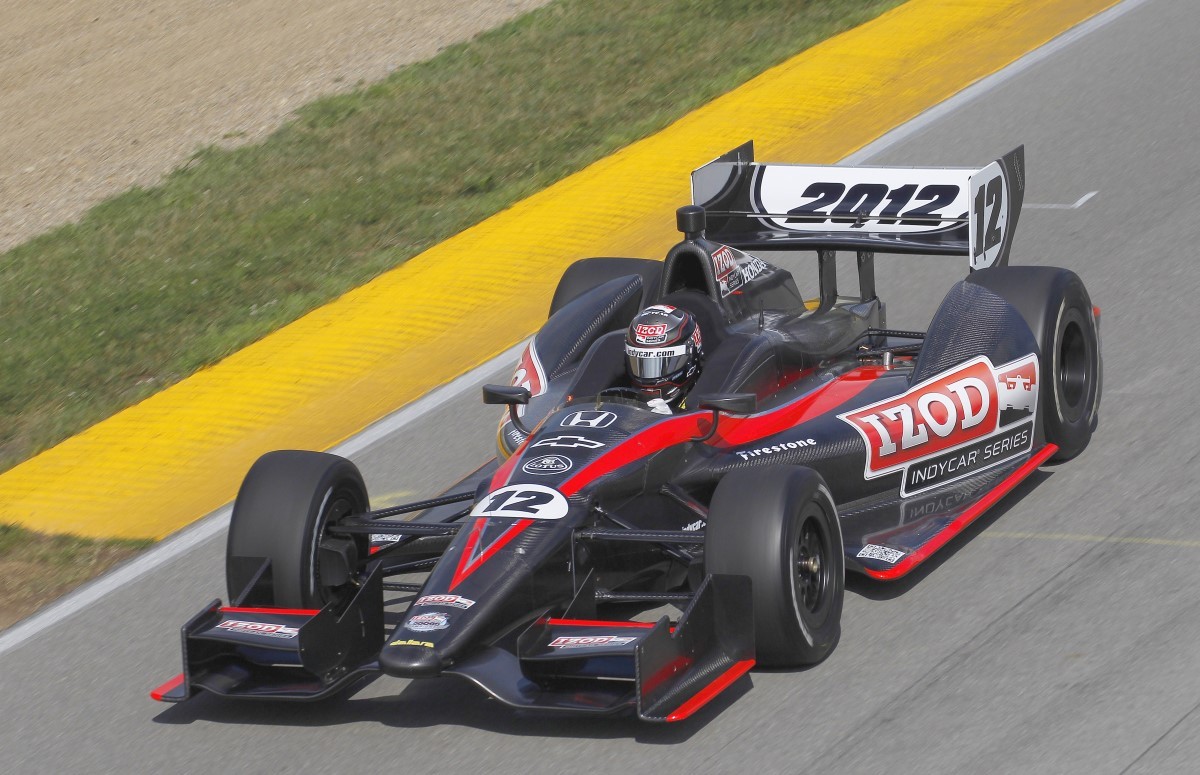New car upgrades driver protection
 |
| The cockpit of the new IndyCar is much safer |
During its annual preseason meeting two years ago, INDYCAR safety consultant Dr. Terry Trammel singled out Justin Wilson as a driver susceptible to high vertical G force loads upon impact because of his height and the design of the IZOD IndyCar Series car that came online in 2003.
“Unfortunately, he proved us right in a field study," Trammel said of the 6-3 Wilson, who suffered a compression fracture of the T5 vertebra in a single-car incident at the Mid-Ohio Sports Car Course earlier this month.
Fortunately, upgrades incorporated into the 2012 IndyCar, based on recommendations by INDYCAR through its ongoing testing program, will increase the protection of drivers.
The cockpit is longer and wider than the current Dallara Automobili monocoque, which allows for additional padding to protect the driver upon impact. There is 3 inches of Expanded Polypropylene foam behind the driver’s seat and 1.5 inches under the seat. Also, a “floating headrest" works in conjunction with the mandatory HANS device attached to the helmet.
“What that means is that before the driver ever pours his custom fit seat they will already have an inch and a half of material that will protect them in a vertical load situation, which is what Justin Wilson went through at Mid-Ohio," INDYCAR director of engineering Jeff Horton said. “Because of his height and the design of that car, he actually has nothing underneath him. He basically sits right on the floor so all the load that the chassis saw was transmitted to straight up his spine.
“With the foam in the new car, it potentially should prevent most of those types of injuries. In addition, we designed in 3 inches off EPP on the back of the car. Again, before a driver ever pours his custom fit seat he’s got 3 inches of protection, which our data shows will prevent most injuries."
The wider chassis, updated to the FIA cockpit opening (21.6 inches) provides for extra foam along the sides of the driver that will protect them in a lateral impact. The additions complement the Zylon panels, which were extended, that are attached to the sides of the chassis that help prevent punctures.
“The car also has been made a little bit longer in that area so that a tall driver can be incorporated and not give up safety systems," Horton noted. “On the current car, our tall drivers have to compromise something at the rear to fit in the car and get the pedals adjusted comfortably – they actually move them all the way forward. In this current car, the driver should be in a normal seating position.
“The headrest has been redesigned on our recommendations as well, with the addition of a thicker cross-section where the helmet will hit in a rearward accident. The current car (designed a decade ago) came about before the HANS was mandatory so to get the HANS to fit correctly we had to take some material out of the current headrest; that’s been put back into this car."
According to Horton, Expanded Polypropylene (EPP) is the preferred material for the seat bottom/back and headrest over Expanded Polystyrene (EPS) because of its higher compressive strength. EPP is formed by individual plastic beads being injected into a steam chest mold, where the beads are fused under steam heat and pressure to form a semi-rigid and lightweight molded product.
“The nice part of the EPP foam is that it doesn’t have any glue in it," he said, “so it’s considered a multi-hit foam. EPS deforms permanently because of the glue in it. You have to think of things like crew members and drivers climbing in and out of the cockpit and they put their foot on it. The EPS could be deformed and not perform properly in an accident."
Trammel and Horton have advocated driver seats to be constructed solely of EPP, which would further increase protection. EPS seats are formed by mixing beads and glue, put it in a plastic bag and have the driver sit on it for a mold. After it dries, it’s covered with a fire-retardant material.
“It’s up to our standards, but the thing is it’s a one-hit seat," Horton said. “The glue in the beads will deform permanently when impacted hard."
Creating an EPP seat takes a few more steps – an EPS seat if formed, scanned and then machined out of an EPP block. Combined with the added EPP foam in the bottom, back and headrest, protection has been significantly increased.
“If a driver happens to take multiple hits in a single accident, like Simona (de Silvestro) at Milwaukee, the 3 inches of material will protect them much better than the current car," Horton said.
INDYCAR, using sled testing with its crash test dummy THOR, will focus next on improvements in frontal impact safety.
“We’ve been very lucky in this series that our tubs and chassis have been very safe," Horton added. “We’ve been able to nitpick at stuff like the headrest design, and this new car incorporates what we learned in seating. In IndyCar, some of our big injuries have been in frontal. We’ve done one round of sled testing and learned a great deal. Once we learn and validate more that can be of benefit, it will be incorporated in this car." IndyCar.com
